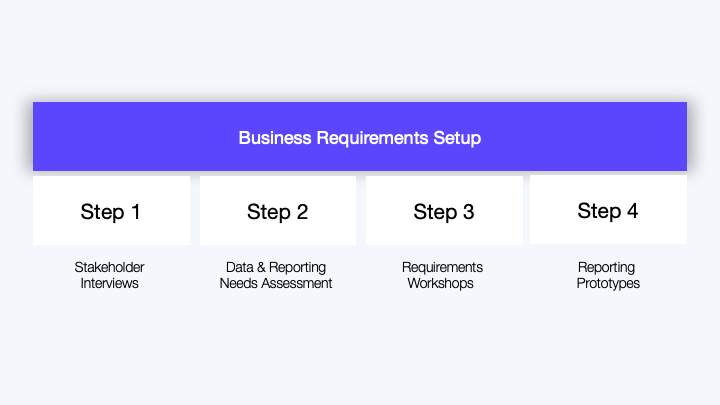Organizations often struggle with chaotic data reporting due to fragmented files and inconsistent metrics. To successfully transition to a modern data tech stack, it’s crucial to establish clear business requirements.
The chaos of data
Let's imagine your organization is flooded with reports - Excel files scattered across shared drives, PowerPoints emailed back and forth, Power BI dashboards built by different teams with no consistency, and ad-hoc SQL queries running on someone's local machine.
Some reports are outdated before they reach decision-makers, or they present five different key metrics, each sourced from a different source. No one knows who owns which data set, and different teams use different tools, making it impossible to get a single source of truth. The frustration is real. To address this, your company introduces a modern data tech stack, moving everything to a structured, automated, unified reporting platform.
The benefits seem a sure thing, but what about the implementation and ensuring a successful transition to a modern tech data stack?
Business requirements: The key to a successful data transformation
Before diving into implementation, the most critical success factor is defining clear business requirements. Without them, even the best tech stack will fail to deliver value. Here are four essential steps to get business requirements right:
1. Conduct stakeholder interviews
What to do: Speak with data analysts, BI users, and business leaders to understand their reporting pain points and analytics needs.
Outcome: Identify critical insights, required reports, and gaps in existing reporting systems.
2. Perform data & reporting needs assessment
What to do: Evaluate current tools, workflows, and data sources to spot inefficiencies.
Outcome: Understand integration challenges and define improvement areas for the new system.
3. Facilitate requirements workshops
What to do: Bring together cross-functional teams to define and prioritize reporting needs, metrics, and visualization types.
Outcome: Align business goals with technical capabilities and create a clear roadmap.
4. Create & review reporting prototypes
What to do: Develop mockups of dashboards and reports and gather feedback.
Outcome: Ensure alignment before full-scale development, reducing the risk of wasted effort.
By following these key steps, organizations can move from dis-organized, inefficient reporting to a modern, well-structured, and business-aligned data system.

Seamless transition equals long term-success
While a new tech stack alone won’t fix reporting challenges, well-defined and clear business requirements will. Prioritizing clarity, investing time, and planning in the early stages is the foundation for successful data transformation, ensuring a seamless transition, better user adoption, and long-term success. This approach helps to manage growing data volumes without relying on extensive infrastructure. By setting clear business requirements, organizations can prepare the way for effective data transformation that aligns with their strategic goals.
NEXT BLOG POST
The importance of accessibility and inclusive digital products
In this blog post, we explore digital accessibility, why it is essential, and what are practical strategies for designing digital products with accessibility in mind, making them inclusive and user-friendly for everyone.




